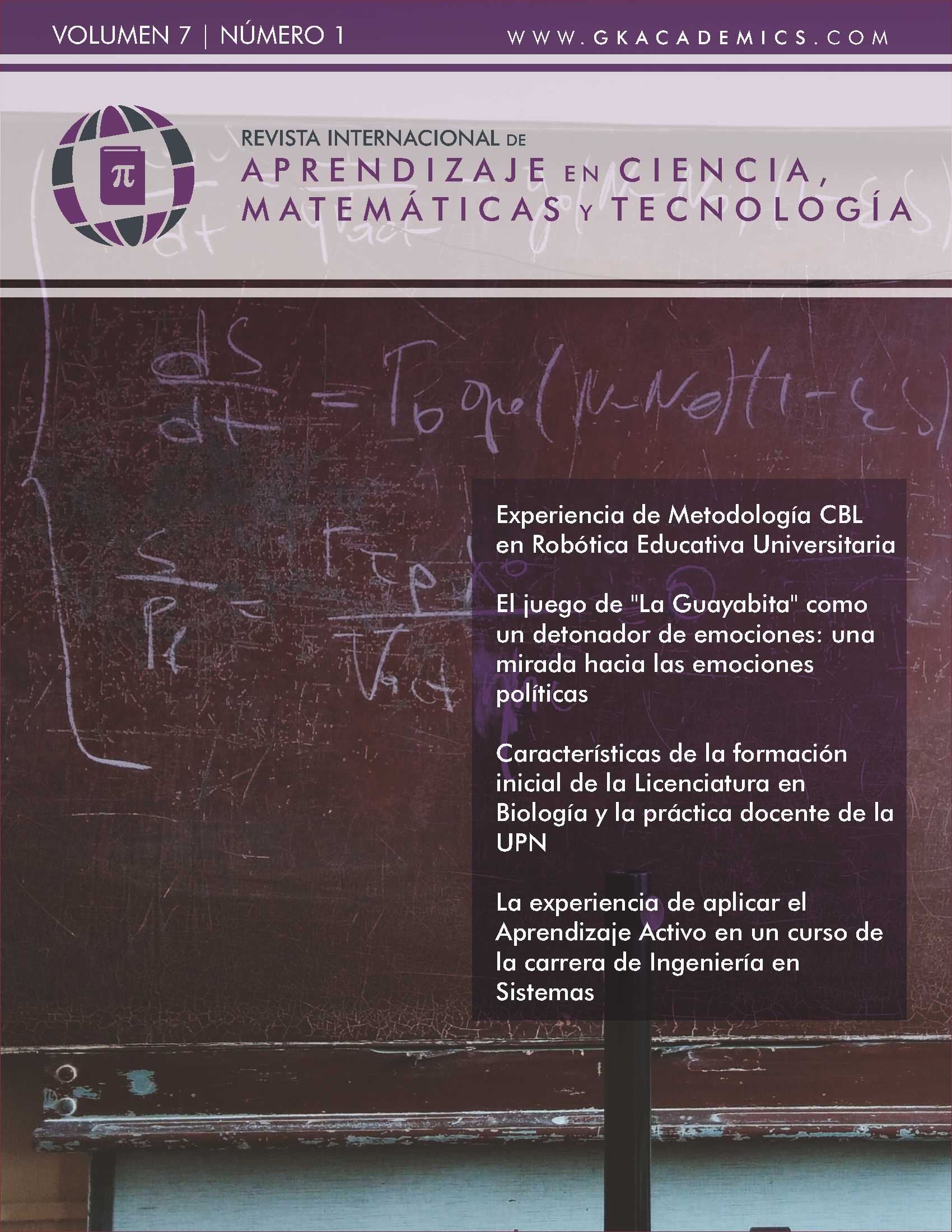The Experience of Applying Active Learning in a Course in Systems Engineering
DOI:
https://doi.org/10.37467/gka-revedumat.v7.2093Keywords:
Active Learning, C , Values, KahootAbstract
The present work discloses the experience of applying active learning in an introductory course in the career Ingeniería en Sistemas de Información de la Universidad Nacional. The experience includes: the comparison of the traditional model versus the active learning model, the description of the course, description of the population, support elements when applying active learning, the way in which active learning was implemented, tools used, perception of the students and conclusions. In this way the purpose of this article is to serve as an example to be used in other disciplinary areas and to allow teachers to improve their university didactics.
References
Acuña, B. P. (2015). Vectores de la pedagogía docente actual. Asoc. Cultural y Científica Iberoamerica.
Barroso Osuna, J. M. (2014). La formación del profesorado en TIC: modelo TPACK.
Bergmann, J. (2012). Flip your classroom: Reach every student in every class every day. International Society for Technology in Education.
Bonwell,C., Eison, J. A. (1991): “Active learning: creating excitement in the classroom”, asheeric higher education report nº 1, George Washingtonuniversity, school of education and human development, Washington.
Cabero Almenara, J. (2015). Reflexiones educativas sobre las tecnologías de la. Tecnología, Ciencia y Educación, 1, 19-27.
Fidalgo-Blanco, Á. S.-E.-P. (2017). Ontological Flip Teaching: a Flip Teaching model based on knowledge management. Universal Access in the Information Society.
Halili, S. H. (2015). Flipping the classroom : What we know and what. 35.
Hernández, I., & Gómez, K. (2018). Uso de Google Forms para el aprendizaje lúdico de los Fundamentos de Programación en C++ La Experiencia en el Curso de Fundamentos de Informática de la Universidad Nacional de Costa Rica.
Graham, K. (2015). “TechMatters: Getting into Kahoot!(s): Exploring a Game-Based Learning System to Enhance Student Learning,” Loex Q., vol. 42, no. 3, pp. 6–7, 2015.
Koehler, M. &. (2009). What is technological pedagogical content knowledge (TPACK)? Contemporary issues in technology and teacher education, 9(1), 60-70.
Marín, B.(2001). Cómo realizar un Diagnóstico Pedagógico. México:Alfa Omega.
Newton, C. C. (2015). Flipped teaching: finding room for interdisciplinary content and peer learning Living and investigación.
Wesley, H. y Richard, P. (2009). Ideas prácticas para promover el aprendizaje activo y cooperativo: 27 maneras prácticas para mejorar la instrucción. Recuperado en noviembre, 20, 2011, del sitio Web Knowledge Hub del ITESM en: http://www.criticalthinking.org/resources/PDF/SP-Active_and_coop_learning.pdf
Downloads
Published
How to Cite
Issue
Section
License
Aquellos autores/as que publiquen con esta revista, aceptan los términos siguientes:
- Los autores/as conservarán los derechos morales sobre la obra y cederán a la revista los derechos comerciales.
- Transcurridos 2 años desde su publicación, la versión del editor pasará a estar en acceso abierto en la web de la editorial, pero la revista mantendrá el copyright de la obra.
- En el caso de que los autores deseen asignar una licencia abierta Creative Commons (CC), podrán solicitarla escribiendo a publicaciones@gkacademics.com.


